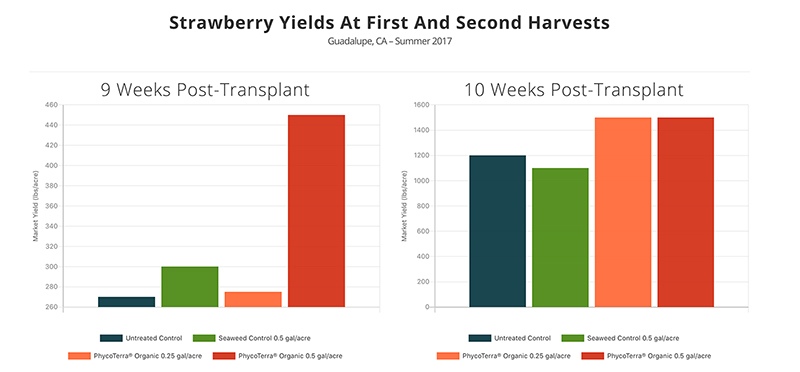Biopesticides Finding a Fit in Florida
Last month’s Florida Grower featured a special report on the rise of biopesticides in agriculture across the globe. The report highlighted how emerging technologies are making these products more effective on the farm.
It’s in the field where the practical benefits of biopesticides are important to growers, particularly for those concerned about re-entry intervals and residue management.
Residue Management
In recent years, growers have become increasingly aware of maximum residue limits, or MRLs as they are commonly called. These are limits placed on residues for certain chemicals on food crops. The tricky part is MRLs can differ widely from country to country. Some products may not even have an established MRL, which can pose problems at ports of entry.
“A grower can be using an application that is legal here, and legal if that crop was going to one of 50 other export countries; but what if he exports to that one country that hasn’t yet set an MRL?” asks Sarah Reiter, director of global marketing for AgraQuest. “All of a sudden his crop is sitting and aging dockside, while they are trying to negotiate a way to get the crop into the foreign market. Growers can avoid that entire headache if they use biopesticides, particularly late in the season.
“Many biopesticides are exempt from tolerances, meaning they don’t have to secure an MRL. These are allowed into foreign markets without the challenge.”
Heller Bros. Packing Corp. has been growing, packing, and shipping citrus for nearly 80 years. The Winter Garden-based company has shipped all over the world with an especially strong base in the Northeast and Canada.
“A grower can be using an application that is legal here, and legal if that crop was going to one of 50 other export countries; but what if he exports to that one country that hasn’t yet set an MRL?” asks Sarah Reiter, director of global marketing for AgraQuest. “All of a sudden his crop is sitting and aging dockside, while they are trying to negotiate a way to get the crop into the foreign market. Growers can avoid that entire headache if they use biopesticides, particularly late in the season.
“Many biopesticides are exempt from tolerances, meaning they don’t have to secure an MRL. These are allowed into foreign markets without the challenge.”
Heller Bros. Packing Corp. has been growing, packing, and shipping citrus for nearly 80 years. The Winter Garden-based company has shipped all over the world with an especially strong base in the Northeast and Canada.
The company’s production manager, Billy Teal, says constant attention is paid to export requirements and restrictions. When canker reemerged in Florida, shipping restrictions became an ever-present consideration. With several years under their belt to learn how to control canker, Teal says, “Canker doesn’t scare us anymore.”
Teal says canker is under better control in the company’s groves because of the good mix of products in use to manage the disease. One of those products is a biorational bactericide that Teal says complements the canker program.
Teal monitors MRLs very closely to ensure nothing used on the farm would present a barrier to trade. He says this requires constant vigilance because new MRLs are being added or existing ones changed regularly.
“Recently, we were looking at MRLs and taking samples for a miticide, because the tolerances had been lowered for the product in the European Union,” he says. “We’ve never had a problem with MRLs and we don’t want to have one. That’s why we do the monitoring and have a core base of products we use, partly based on their MRL status, and of course, efficacy.”
Teal says canker is under better control in the company’s groves because of the good mix of products in use to manage the disease. One of those products is a biorational bactericide that Teal says complements the canker program.
Teal monitors MRLs very closely to ensure nothing used on the farm would present a barrier to trade. He says this requires constant vigilance because new MRLs are being added or existing ones changed regularly.
“Recently, we were looking at MRLs and taking samples for a miticide, because the tolerances had been lowered for the product in the European Union,” he says. “We’ve never had a problem with MRLs and we don’t want to have one. That’s why we do the monitoring and have a core base of products we use, partly based on their MRL status, and of course, efficacy.”
Picker Safe
U-Pick farms are increasingly popular among the “locavore” crowd. In Florida, the number of these operations is increasing with each season.
According to Reiter, biopesticides offer these growers a number of benefits. “A lot of U-Pick operations or smaller growers are in crops that need pollinators,” she says. “It also is great to harness the power beneficials have in controlling detrimental insects. Most importantly, many biopesticides have the shortest re-entry intervals, meaning you can spray and get people back into that field four hours later.”
According to Reiter, biopesticides offer these growers a number of benefits. “A lot of U-Pick operations or smaller growers are in crops that need pollinators,” she says. “It also is great to harness the power beneficials have in controlling detrimental insects. Most importantly, many biopesticides have the shortest re-entry intervals, meaning you can spray and get people back into that field four hours later.”
Tom Minter and his family run a 15-acre strawberry and blueberry U-Pick operation in Oviedo. He says keeping fields open to his customers is a top priority.
“We are open every day [with the exception of Monday] when we have berries, so re-entry and postharvest intervals are very important to us,” says Minter. “Once we start picking, usually around Christmas time, we do not apply anything that has more than a one day postharvest interval. We also are very careful not to exceed the total number of applications allowed on that crop. For this reason, and to minimize pathogen resistance, we like to rotate chemistry with weekly fungicidal sprays. We rarely make more than two insecticide/miticide sprays per year.”
Minter says he has incorporated a biofungicide because it has performed well and for resistance management. “For me, the product must perform, have a one day or less postharvest interval, acceptable formulation [no nozzle plugging or residue left in the tank], and be somewhat reasonable in price,” he says.
“We are open every day [with the exception of Monday] when we have berries, so re-entry and postharvest intervals are very important to us,” says Minter. “Once we start picking, usually around Christmas time, we do not apply anything that has more than a one day postharvest interval. We also are very careful not to exceed the total number of applications allowed on that crop. For this reason, and to minimize pathogen resistance, we like to rotate chemistry with weekly fungicidal sprays. We rarely make more than two insecticide/miticide sprays per year.”
Minter says he has incorporated a biofungicide because it has performed well and for resistance management. “For me, the product must perform, have a one day or less postharvest interval, acceptable formulation [no nozzle plugging or residue left in the tank], and be somewhat reasonable in price,” he says.
To learn more about biopesticides, visit www.biopesticideindustryalliance.org.
0
1
5
Biopesticides Finding a Fit in Florida










